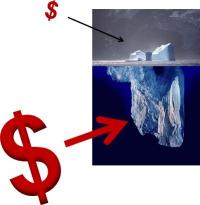Quality Culture
Definition
Joseph Juran, the quality consultant, defined Quality Culture as "A culture throughout the organization that continually views quality as a primary goal. It is the pattern—the emotional scenery—of human habits, beliefs, commitments, awareness, and behavior concerning quality."[1]
But in short, you can say that in a Quality Culture everyone does the right thing even when nobody is looking.
Characteristics of Quality Culture
The term Quality Culture is difficult to define or assess because there are no standard metrics.[2][3] However, Juran does describe five characteristics of a quality culture:[1]
Leadership commitment
Leadership demonstrates their commitment in several ways, such as, by prioritizing resources to quality over other demands. In addition, leadership shows visible concern about the progress of the quality system during interactions with employees. However management chooses to demonstrate their commitment, it is palpable to all employees and is enduring.[1]
Awareness of quality
Leadership trains the employees on the Critical Quality Attributes (CQA) of the company's products and also the Critical Process Parameters (CPP).[4] CQAs are the characteristics of the company's products that are important to the proper functioning of the products in the hands of the customers. CQAs are outputs from the company's fulfillment process. CPPs are inputs into the company's fulfillment processes that affect the quality of the product. The employees need to know how their actions affect both CPPs and CQAs.[1]
Empowerment of the employees
Employees are given a calculated amount of freedom to improve quality. This means that they have the authority to make changes within a defined scope and they have the resources to make those changes.[1]
Participation as a means of inspiring action
Employees are given opportunities to participate in improving the quality of the product. The possibilities are almost endless. They can offer suggestions; participate in design review teams; help implement other peoples' suggestions, etc.[1]
Recognition and rewards to employees who participate
Employees are celebrated for their quality achievements. This recognition usually spurs the person to try even harder the next time.[1]
Why Quality Culture is Important
With globalization increasing the competitive pressures on companies, marketing quality products is not a goal any more.[5] It's a given. J.D. Power, Consumer Reports, and the internet provide consumers with all the information they need to choose a quality product.[6]
The following evidence shows that a strong Quality Culture drives profits and higher stockholder equity:
- From research by CEB, "A company with a highly developed culture of quality spends, on average, $350 million less annually fixing mistakes than a company with a poorly developed one."[6]
- Winners of the Malcolm Baldrige Quality Award demonstrate a long-term shareholder value that is 38% to 46% higher than control groups.[7]
-
Managers in companies regulated by FDA may fear Warning Letters and Consent Decrees. However, there is something worse. In product liability suits, all of your GMP records will be subpoenaed.
In addition, the US Food and Drug Administration has acknowledged the importance of an organization's Quality Culture.[8] FDA has requested the pharmaceutical industry to provide metrics that reflect the culture of the company, thus reinforcing the principle that measurements of the characteristics of the finished product alone are inadequate to ensure the efficacy and safety of the product to the consumer.[9][10]
FDA also stated that “it is the role of management with executive responsibility to create a quality culture where employees understand that data integrity is an organizational core value and employees are encouraged to identify and promptly report data integrity issues.”[11]
Assessment of Quality Culture
The difficulty in managing a nebulous concept like Quality Culture prevents many companies from knowing what kind of Quality Culture they have.[12] The importance of actually measuring Quality Culture through-out the organization is illustrated by a survey that was done by Forbes Insights in partnership with the American Society for Quality. 75% of senior or C-suite titles believed that their organization exhibits “a comprehensive, group-wide culture of quality.” But agreement with that response dropped to less than half among those with quality job titles. In other words, the further from the C-suite, the less favorable the view of the culture of quality.[13]
There are a number of instruments available for managers to begin to assess the cultures of their organizations.[14][15] The International Society for Pharmaceutical Engineering (ISPE) and the Parenteral Drug Association (PDA) have developed information and resources to help pharmaceutical companies better understand why quality culture is important and how to assess the current situation within a site or organization.[16]
Your next question might be 'How can I achieve a Quality Culture?'
References
- Juran, Joseph M.; Godfrey, A. Blanton (1999). Juran's Quality Handbook (5th ed.). McGraw-Hill. p. 22.65. ISBN 007034003X.
- "The Metrics of Quality Culture". PharmTech.
- Lee, Harvey; STENSAKER, Bjorn (November 2008). "Quality Culture: understandings, boundaries and linkages". European Journal of Education. 43(4): 427–442.
- U.S. Department of Health and Human Services, Food and Drug Administration (November 2009). "Guidance for Industry Q8(R2) Pharmaceutical Development". fda.gov.
- Hill, Charles; Hult, G. Tomas M. (2020). Global Business Today. McGraw-Hill. ISBN 9781260088373.
- "Creating a Culture of Quality". Harvard Business Review. 2014-04-01. ISSN 0017-8012. Retrieved 2020-12-15.
- Hendricks, Kevin B.; Singhal, Vinod R. (2001-03-01). "The Long-Run Stock Price Performance of Firms with Effective TQM Programs". Management Science. 47 (3): 359–368. doi:10.1287/mnsc.47.3.359.9773. ISSN 0025-1909.
- Center for Drug Evaluation and Research (2020-03-12). "Quality Metrics for Drug Manufacturing". FDA.
- Center for Drug Evaluation and Research (2020-05-05). "Submission of Quality Metrics Data Guidance for Industry". U.S. Food and Drug Administration. Retrieved 2020-12-15.
- Center for Drug Evaluation and Research (2019-12-20). "Frequently Asked Questions regarding the Quality Metrics Site Visit and Feedback Programs". FDA.
-
US Food & Drug Administration (2015-12). "Data Integrity and Compliance With Drug CGMP Questions and Answers Guidance for Industry"
- "ISPE Advances Its Focus on Cultural Excellence". ISPE | International Society for Pharmaceutical Engineering.
-
Hacker, Stephen (2014). "Culture of Quality: Accelerating growth and Performance in the enterprise" (PDF). Forbes Insights.
- "Magazines and Journals - ASQ". asq.org.
- "Quality Culture and its Measurement". www.pda.org.
- Frederick, Tami (2019). "ISPE – PDA Guide to Improving Quality Culture in Pharmaceutical Manufacturing Facilities" (PDF). ISPE.
